Guest Post: What Makes A Great Commedia Mask? by Bruce Marrs
[I’ve asked a few great mask makers to submit a guest post entitled: What Makes A Great Commedia Mask? Their responses will appear here over the next few days. The images sprinkled throughout this page are from the author’s website, copyright by the author (as is the text), and used by permission. For permission to reprint this article or the images, please contact the author on the listed website.
This guest post is by Bruce Marrs .  Bruce was one of my teachers at the Dell’arte School and heavily influenced my idea of commedia, mask, and clown. Bruce is an award winning mask maker, teacher, and director who has designed original masks for numerous shows and theatres, from Contemporary Commedia to Opera. Bruce trained at Ecole International du Mime Marcel Marceau, Ecole du Mime Etienne Decroux, the Lilly Reyers Ballet (Paris), and with Edward Tamiz. He has taught and directed at numerous theatres and universities, and high schools of the performing arts all over the country. His masks are used in many training schools. And if you saw the 1998 version of “Godzilla”, Bruce designed all of the movement for the big dragon himself. You can find out more about Bruce’s work at http://www.marzillamask.com]
Choosing the right commedia masks reminds me of choosing the right guitar. Â With a guitar there is first; the sound, second; the playability, Â and third; the looks. Â The fourth thing is called the vibe. Â All the intangibles go into the vibe, but it comes down to “Do you dig this guitar? Â Does it make you happy to play it?”
I’m not sure I can work this analogy point for point – I’ll just jump off and go for masks.
First, do you have a kinesthetic response to the mask, a physically intuitive and mysterious inner sense of knowing how it moves. Â Does it call to your muscles, inspire you physically? Â Does it move you to move it? Â Somebody else might call this the spirit of the mask calling you.
Second, how does it fit? Â Do your eyes and teeth light up the mask? Â Go ahead, use the mirror, its okay this time. Â Does the top lip of the mask cover your own top lip, but not your teeth? Â Hopefully so, crucially so. Â It sucks to have two top lips, kills the magic of believability. Â And a mask that is too long muffles the vocal life. Â How are the eyeholes? Â Are they so big that we are reminded constantly of the actor inside? Â Or are they too small for your eyes to act? Â Are they off-centered? Â Make you look cross-eyed? Â A good lip and good eyes are so important, combined with a good fit.
Third; the playability, the character. Â Does the mask capture the archetype? Â Is it fun? Â Dynamic? Â Play well from different angles? Â Does it seem to change with changes in the actor’s physical and emotional attitude? Â Is the mask funny? Â Fun? Challenging in the good way? Â Alive? Â Promising?
Fourth; craftsmanship. Â Well made? Â Going to endure a month of county fairs in 110 degree heat and copious sweat? Â Going to endure a career?
What if you’re looking for a set of masks for teaching? Â Is the set a good family of masks, all of them living in the same world? Â Do they play well together? Â Is the set a balanced set of characters? Â Are they individually inspiring the students? Â How about general fit?
Something very important to me as a mask maker mostly aimed at student work is that the masks have the widest general fit. Â Leather masks and neoprene masks have some flexibility on the horizontal plane. Â How is the fit for a general student public? Â Can the mask accommodate different sizes, say from medium small to medium large? Â There should be a mask that will fit the smallest in the group, and one that will fit the largest. Â Are the masks cleanable?
I advocate a spray of 1/2 water, and 1/2 hydrogen peroxide, lightly sprayed into the mask after use, and gently wiped out. Â I use a gloss urethane on the inside of my masks so that they can be cleaned. Â Are the masks going to endure student use, student group after student group?
And finally, all the concerns for the individual, enumerated at the top go into selecting a set for class use.
A possible fifth concern; pedigree. Â Who made the mask? Â Who taught the mask maker, and who taught the one who taught? Â What is the lineage of teacher/student and performance history? Â There is something to be said about holding a Sartori mask in your hand, Â or one made by the Balinese master who learned from his father, or the African mask that arrives from a lineage that has a long and true spiritual history. Â Or a mask from the hand of the student who snatched the pebble from the master’s hand.
What about contemporary Commedia? Â Is it possible? Â They weren’t doing museum theatre back in the day, were they? Â Are the characters recognizable in your community? Â Or is that Dottore mask just a dark and confusing shape on an actor’s face.
And, as always, I quote my first mask teacher, Ralph Hall, speaking to mask performance students: “You are either magic, or an actor walking around with a lampshade on your head.”
May the spirit of the mask find you and find life through you.
Bruce Marrs. Â marzillamask.com

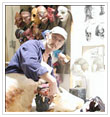
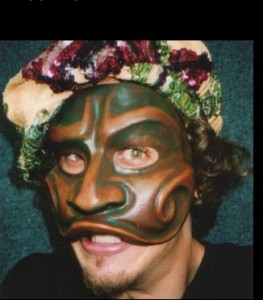
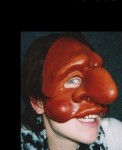
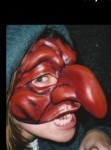
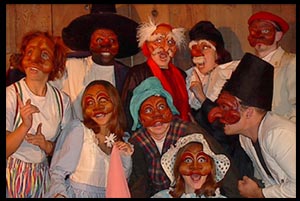
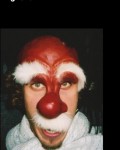
Pingback: Tweets that mention Guest Post: What Makes A Great Commedia Mask? by Bruce Marrs -- Topsy.com